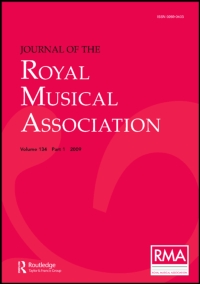Article contents
The Chester “Recorders”
Published online by Cambridge University Press: 01 January 2020
Extract
Two of the most old-fashioned towns to be found in Europe are Nuremberg and Chester, and comparisons between them are often made and similarities and coincidences pointed out. It is a remarkable fact that the only sets of Recorders now known to exist are to be found in those two cities. In the year 1886, the Chester Archaeological Society moved into new quarters in the freshly built central “Grosvenor” Museum. Amongst the lumber from its old rooms was a peculiarly shaped box (which crumbled to pieces almost immediately) and in it the Secretary found what he thought to be “an ancient bassoon.” On viewing the remains, what was my delight to find that the Society was the possessor of a rare set of ancient Flutes-a-Bec, or Recorders.
- Type
- Research Article
- Information
- Copyright
- Copyright © Royal Musical Association, 1900
References
∗ Messrs. Glen, of Edinburgh, have two recorders: a Tenor, in C. 25¾ in. long, and a Bass, in F, 39¾ in. long. Maker's name, Rippert. The Bass instrument is very similar to the Chester Bass.Google Scholar
∗ This extract has already been quoted by Mr. Welch, but I repeat it as it is such an important piece of evidence as to the disuse of the recorder.Google Scholar
† “Present State of Music in Germany.”—Burney, Vol. I., page 41.Google Scholar
∗ Gavotte by Henri Le Jeune, 1636; Quartet for four recorders, J. C. Bridge; and Duet for treble and bass recorders, were played upon the set of instruments belonging to and exhibited by the Chester Archaeological Society. The performers were the Rev. J. L. Bedford, Mr. Radcliffe, Mr. Finn, and Dr. J. C. Bridge.Google Scholar
- 1
- Cited by


